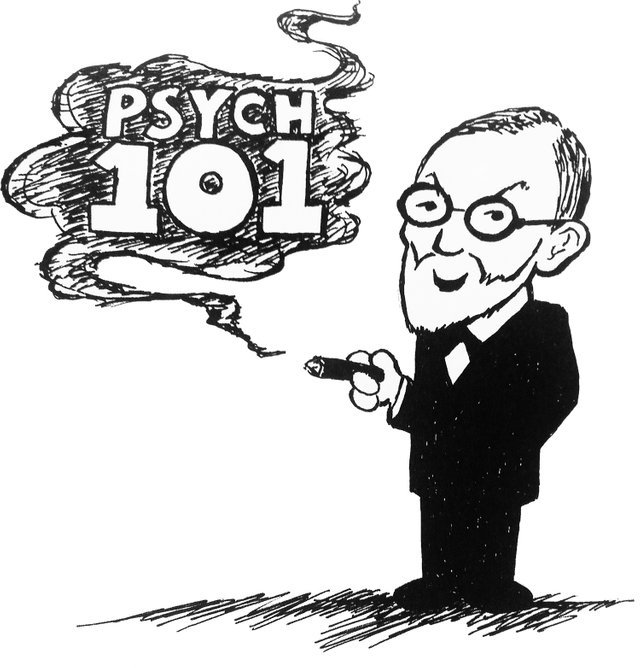Psych 101: How to Induce a Lucid Dream

Lucid dreaming can best be described as experiencing a dream as though it were real life. Often in dreams, the scenes depicted are hazy or illogical. They are usually random, and when you wake up in the morning, forgotten. Instead of simply acknowledging your surroundings in a dream, lucid dreaming allows you to understand them, and at times, control them.
Lucid dreaming is a waking awareness of your surroundings while you are dreaming. While the frequency varies between individuals, chances are you've had one at some point in your life. What you may not have known, however, is that it is possible to compel your mind to generate lucid dreams, allowing you to take advantage of all the benefits it provides.
People most often want to experience lucid dreams as a form of recreational pastime. They give you nearly full control of your dreams, making your imagination the limit for what you experience. Other times, lucid dreams are helpful for people who experience chronic nightmares, as a wakeful consciousness allows them to rationalize their fears.
Here are the most common ways to encourage your body to have lucid dreams.

Perform Reality Checks
As suggested by the name, reality checks are actions you perform to see whether or not you are awake and in reality. The purpose of this is to train your mind to be aware of your surroundings, so if something seems "off" when you are dreaming, your mind will take notice. If performed often and habitually, reality checks eventually become an automatic action that occurs within dreams you have.
There are many different reality checks that are helpful in identifying either the waking world or the sleeping world. For instance, you may have noticed that while you are sleeping, words and numbers often appear in seemingly nonsensical patterns. At the time, when you're dreaming, the words seem logical, but retrospectively they mean nothing. This can be used to your advantage as a reality check. Every so often, look at your watch or a book and make sure the words or numbers appear in the expected order. Another example of a reality check is pinching your nose and seeing if you can still breathe through it. During a dream, you will be able to breathe through it; when you're awake, you won't.
While you are performing your reality check, be critical of the results; do not simply look and your watch and think that will be sufficient. You must carefully look and ensure that all of the numbers appear in the right order. Likewise, when pinching your nose, make sure you cannot breathe.

Mantra-Induced Lucid Dreams
Another easy and accessible method to encourage lucid dreaming is to tell yourself that you will have one as you fall asleep at night. As you sleep, repeatedly tell yourself "I will remember my dream tonight," "I will experience a lucid dream," or the like. Priming your mind for such actions makes it more likely that they will occur.
The scientific basis for this is hazy, but anecdotal evidence suggests that this is a reliable technique. However, you must believe in the mantra you are reciting; mindlessly thinking the words over and over again will yield no progress because you will not be internalizing the thoughts. A deep belief that what you say is true is necessary for this method to work properly. In addition, make sure that the idea you are thinking of is consistent. Mixing ideas, such as thinking both "I will experience a lucid dream tonight" and "I will dream of a car tonight" provide varied success rates when compared to sticking with a centralized idea.
Wake-Back-to-Bed Technique
With the wake-back-to-bed method of prompting a lucid dream, you are encouraged to wake up in the middle of the night and then fall back asleep after a brief period of wakefulness, 30 minutes for example. This activates certain key components in your brain which remain active as you return to sleep. Because you are combining both wakefulness and dream states, you are more likely to experience a lucid dream.
This technique can either be employed naturally or artificially; both methods have their benefits. By waking up naturally, you are not potentially damaging your hours of rest. However, you also run the risk of not being able to fall back asleep, which ruins any chance of having a lucid dream. By setting an alarm for the middle of the night, you are almost guaranteeing you will fall back asleep and have a more active dream state. On the other hand, you might be missing out on sleep and feeling tired the next day. If you choose to wake up with an alarm, you may want to set it for five hours after you fall asleep.
There are several different methods you can use to raise the possibility of experiencing a lucid dream. Those described above are safe and easy to apply each night.
Please Follow me for more great topics. will be adding a variety of topics in the coming up days. Want to make some political, health, learning and many other varieties to keep you on your feet.
Previous posts below
Psych 101: Beginner Classical Conditioning
Psych 101: Intermediate Classical Conditioning

Posted two great new posts on Psych 101 links below, Some good reads.
https://steemit.com/psych/@carlidos/psych-101-crayon-theory-the-psychology-of-color
https://steemit.com/psychology/@carlidos/psych-101-the-temptation-to-project-in-cyberspace
Don't forget to check out my last psych 101 about conditioning.
Nice! I am going to try. Setting up an alarm ;). Thanks for sharing the info @carlidos